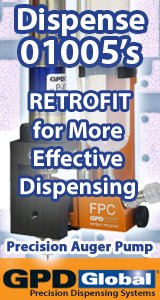Are you talking about bare board cleanliness or assembly level cleanliness?
Bare board cleanliness is still primarily measured by resistivity of solvent extract (ROSE) using instruments such as Omegameters and Zero Ions. What is considered as "acceptable" cleanliness varies between specification and from company to company. MIL-P-55110 had a level of 6.5 by that method. Companies use anything from 1 to 8 by ROSE. These are also many cases where ROSE data showed squeeky clean boards, but experienced all kinds of corrosion and metal migration problems due to entrapped or absorbed residues which ROSE will often not detect.
Further, these machines are very operator dependent. Anyone who desires to use an ionic contamination tester should read EMPF report RR000013, "An In-Depth Look at Ionic Cleanliness Testing".
3 Water soluble fluxes leave ionic residue detectable by: 3a ROSE testing (Omega meter, Ionograph....). This test is useful to determine whether the cleaner is in control. Commonly used throughout the industry. 3b Ion chromotagraphy. This test determines what specific residue causes failure. Only large shops can afford to maintain the equipment. 3c Surface Insulation Resistance. This test actually has a correlation with field failures. None relating to residue if resistivity is above a certain level. Guaranteed if its below a certain level. The level depends upon environment, panel design and circuit design (voltage, current, impedance, spacing, indoors vs. under the hood...). This test should be done on test coupons in an environmental test lab. It is rarely done as a process control, since the test takes a week, and is not usually done on production panels.
Start by looking at J-STD-001C, IPC-TM-650 [Method 2.3.28] and IPC-9201 (SIR Test Handbook). These standards are very broad [unlike the old military standard], relying on customer requirements to define the cleanliness requirement that you use to monitor your process.
Ideally, you would have a lab run a SIR test to determine field failure levels and correlate those test results with your ROSE monitoring level. Unfortunately, most boards do not have the coupons neccessary to run these tests. So withiut those you need to measure the levels of corrosion forming material using IC [based on some expert opinion] and use that to correlate with your ROSE testing for process control.
I know this has been kind of rambling and probably doesn't provide the linear flow of logic that might be preferable, but hopefully it will be a starting point for our discussion here.
reply »
![]() We are using the omega meters to determine the solvent extr...
- Jan 08, 2001
by
Simon
We are using the omega meters to determine the solvent extr...
- Jan 08, 2001
by
Simon
![]()
![]()
![]() Are you talking about bare board cleanliness or assembly le...
- Jan 08, 2001
by
davef
Are you talking about bare board cleanliness or assembly le...
- Jan 08, 2001
by
davef
![]()







